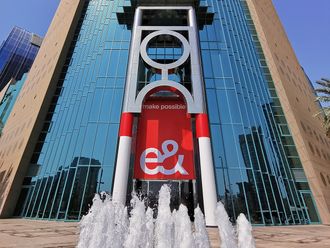MADRID, LONDON
Bond investors are buying into some of Europe’s most troubled banks, in further evidence that the continent’s years-long effort to put its lenders on a solid footing is working.
Banca Monte dei Paschi di Siena SpA received orders for more than triple the subordinated debt it offered on Thursday, as an indicative Moody’s rating eight levels below investment grade proved no hurdle to investors. The 750 million-euro ($903 million) sale brought more daylight to a bank that was Italy’s most unstable only a year ago, before the lender imposed 4.3 billion euros of losses on junior creditors in an Italian government rescue.
“Compared to the rollercoaster of the past decade — we’re unlikely to get that again as the banks have raised so much capital,” said Carlo Mareels, a London-based credit strategist at Mitsubishi UFJ Financial Group Inc. Investors are now focusing on “particular bonds, strategies, rather than banks blowing up every month,” he said.
Demand for the riskiest financial debt in Europe has likely been whetted by the 15 per cent return last year in the additional Tier 1 asset class, or AT1, which was among the top performers in the corporate bond market. The safer but still risky Tier 2 bonds — the kind sold by Monte Paschi — returned 5.1 per cent. That’s all despite four bank failures in Italy and Spain in which some creditors lost everything.
The Cleanup
Many of the better-performing subordinated bonds were issued several years ago, before a raft of banks raised capital.
Germany’s Deutsche Bank AG and Italy’s UniCredit SpA helped spur the rally by shoring up their capital position with a combined 21 billion euros of share sales in 2017. Last month, UniCredit SpA issued 1 billion euros of AT1 debt for a 5.375 per cent coupon, compared with 9.25 per cent one year ago.
“Fast forward to today and we’re in a very different position,” said Eoin Walsh, a portfolio manager at TwentyFour Asset Management in London. “From a fundamental perspective, most of the banks have now repaired their balance sheets and are arguably better capitalised now than they have ever been.”
The cleanup in Italy and much of Western Europe has made some bullish comments by investors back in 2016 look prescient.
Giuseppe di Mino, managing director at Amber Capital in London, said in December of that year that “a lot of concerns on Italian banks were around the potential contagion risk from Banca Monte dei Paschi, but once you fix Monte dei Paschi, all the other smaller banks that require capital are much more manageable.”
Far From ‘Functional’
As the bond market rushes to lend to once-wobbly banks speculating that economic growth will revive earnings, Monte Paschi, at least, is far from fixed. Not only that, the Italian banking industry must also contend with looming elections and the associated political risks.
AT1s are the first bank bonds eligible for losses if a lender runs into trouble, Tier 2 bonds are next in line.
“Monte Paschi is still far from being a functional bank,” said Marta Bastoni, an analyst at Bloomberg Intelligence in London. “But the journey post capital raise is in the right direction: cost cuts, balance sheet stabilisation, and NPL clean-up. Also, the 68 per cent government ownership gives some reassurance.”
Monte Paschi on Thursday sold 10-year notes to yield 5.375 per cent. They were bid at about 100.9 on Friday at 11:10am in London, up from the sale price of 100, according to broker quotes on Bloomberg. The deal rode on the coattails of a surge in the lender’s stock on Wednesday and an announcement made hours earlier about the sale of some non-performing loans.
“Positive signs dominate in the European banking landscape,” said Philipp Jaeger, senior fixed-income analyst at Berenberg Bank in Frankfurt. “At the end, everything is a question of price.”












